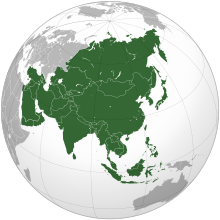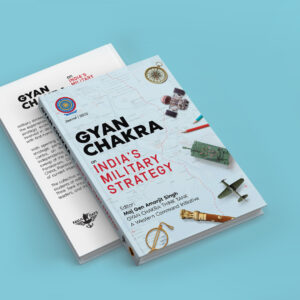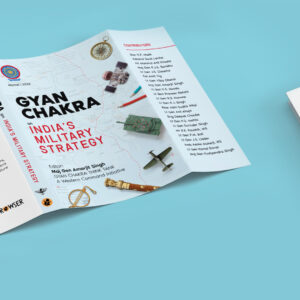NEWS – 1: Border Issues
Union Home Minister Amit Shah on Friday said India’s two major borders with Pakistan and Bangladesh will be completely secured in the next two years.
He was speaking on the occasion of the 59th Raising Day celebration of the Border Security Force (BSF).
VIEWS
-
- The India-Pakistan Border is 2,290 km long and the India-Bangladesh border is 4,096 km.
-
- In places, it has long riverine, mountains, and marshy areas where it is very difficult to erect fences.
-
- Border fence alone cannot prevent infiltration, it has to be manned and equipped appropriately.
-
- India keeps spending money on erecting, maintaining, and manning the fence. This is a slow bleed to its economy and security apparatus.
-
- Also, there is the problem of underground tunnels across the fence.
-
- A new dimension is the use of small tactical drones coming across for smuggling and attack with small weapons.
-
- Hamas’s attack against Israel has opened a new threat of mass infiltration across the border by sub-conventional aerial platforms.
NEWS-2: Drone Threat at the Border
BSF director general Nitin Agarwal has disclosed that:-
-
- 90 Pakistani drones have been shot down on the border in a year.
-
- The number of drone sightings on the India-Pakistan border has increased to 300, compared to 268 in 2022, 109 in 2021, 49 in 2020, and 35 in 2019.
-
- These drones were within a range of 2-10 km on the border.
-
- These drones carry narcotics, arms, and improvised explosive devices.
-
- BSF has seized about 1,000 kg of heroin over the last year.
-
- BSF has also deployed a hand-held static and vehicle-mounted anti-drone system to counter the increasing threat of drones on the Indo-Pak border.
-
- The seized and shot-down drones are largely made in China.
VIEWS
-
- This subcon threat is here to stay.
-
- It is a grey zone activity that would continue even in the no war no peace scenario.
-
- Anti-drone systems would be heavy in demand.
-
- Cheap Chinese drones are finding their way into Pakistan.
-
- China has also supplied armed drones to Pakistan.
-
- Pakistan is also collaborating with Turkey for the development of indigenous drones.
NEWS-3: India Border Talks with China
-
- The Ministry of External Affairs (MEA) of India disclosed that a virtual meeting took place under the framework of the Working Mechanism for Consultation and Coordination on India-China Border Affairs (WMCC). Gourangalal Das, Joint Secretary (East Asia) in the Ministry of External Affairs, led the Indian delegation. The Chinese team was headed by the director-general, of boundary and oceanic affairs in the Chinese foreign ministry.
-
- The MEA statement said that the two sides reviewed the situation along the LAC in the Western Sector of the India-China border areas, and engaged in an open, constructive, and in-depth discussion of proposals to resolve the remaining issues and achieve complete disengagement in eastern Ladakh.
-
- Both sides decided to hold the next round of senior military commanders’ meetings at the earliest.
-
- They further agreed on the need to maintain peace and tranquillity along the border areas, ensure a stable situation on the ground, and avoid any untoward incident.
VIEWS
-
- The situation has been tense after the Galwan clash in Jun 2020. The Indian and Chinese troops are locked in a confrontation at certain friction points in eastern Ladakh.
-
- As a result of a series of military and diplomatic talks, the two sides completed the disengagement process in 2021 on the north and south banks of the Pangong Lake and in the Gogra area.
-
- The Indian side has been strongly pressing for the resolution of the lingering issues at Depsang and Demchok. There has been no breakthrough so far.
-
- “Maintain peace and tranquillity along the border areas” are hollow words used by China to delay the process and buy time.
-
- China also has mastered the art of confusing the issue with false claims and documents.
-
- China cannot be trusted as it continues to keep the pot boiling.
NEWS-4: Indian Navy Day Announcements About Women Induction
The Chief of Naval Staff, Admiral R. Hari Kumar announced during his speech at a press conference ahead of the Navy Day:-
-
- CNS lauded the Agnipath scheme, calling it a much-needed, transformational change.
-
- More than 1,000 women agniveers have been incorporated into the Indian Navy. (The first batch of Agniveers graduated from the premier-establishment, INS Chilka, in March this year. And importantly, this batch of Agniveers includes 272 female Agniveer trainees as well. The second batch of Agniveers had a total of 454 women. With the third batch number has crossed 1,000.
-
- He asserted that these statistics stand testament to the Indian Navy’s philosophy of all roles and all ranks concerning the deployment of women in the service, both for officers and for personnel below the rank of officer.
-
- He also announced appointment of the first woman commanding officer of an Indian naval ship.
VIEWS
-
- Time will tell about the success or failure of the Agnipath scheme and its long-term effect on the operational preparedness of the forces.
-
- Periodic review and midterm corrections are essential for the success of the scheme.
-
- This scheme should be extended to paramilitary forces and other central and state government services.
-
- Women are being inducted in all three services at the officer level and in other ranks.
-
- Army and IAF have already appointed women as commanding officers.
Suggestions and value additions are most welcome
For regular updates, please register here:-
References and credits
To all the online sites and channels.
Disclaimer:
Information and data included in the blog are for educational & non-commercial purposes only and have been carefully adapted, excerpted, or edited from sources deemed reliable and accurate. All copyrighted material belongs to respective owners and is provided only for purposes of wider dissemination.



